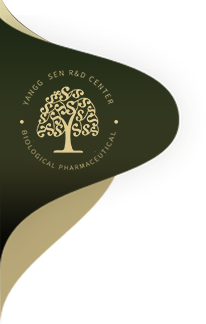News and Information

Key steps and technologies in cosmetics production
Release time:2024-01-08
Cosmetics franchise brands are popular in the market, and understanding the key steps and techniques of cosmetics production is important for franchisees. This article will explore the core processes of cosmetics production, introducing key steps such as formula development, raw material procurement and quality inspection, production process control, packaging, quality control, and testing. Understanding these key points will help franchisees better manage cosmetics franchise brands and provide high-quality cosmetic products.
Key Steps and Techniques in Cosmetic Production
Cosmetics franchise brands are becoming increasingly popular in today's market, and understanding the key steps and techniques in cosmetic production will be of great help to franchisees. In this article, we will explore the core processes of cosmetic production to help you better understand the manufacturing process and technical points of cosmetics.
First, the first step in cosmetic production is research and development and formulation. This stage involves researching market trends and consumer needs to determine the functions and characteristics of cosmetics. When formulating, the selection and ratio of raw materials must be considered to ensure the safety and effectiveness of the product.
Next is the procurement and quality inspection of raw materials. The ingredients of cosmetics usually include basic raw materials, active ingredients, preservatives, etc. When choosing suppliers, it is necessary to ensure that the raw materials they provide meet relevant standards and have undergone strict quality inspection. Only high-quality raw materials can produce high-quality cosmetics.
Then there is the control and management of the production process. Cosmetic production requires strict operating specifications and production process control. This includes steps such as weighing, mixing, heating, cooling, and filling of raw materials. In each step, it is necessary to ensure the accuracy and stability of the operation to ensure the quality and stability of the product.
In addition, cosmetic packaging is also an important link. Packaging is not only the appearance of the product, but also plays a role in protecting the product. Appropriate packaging materials and technology can extend the shelf life of the product and provide a better user experience.
Finally, there is product quality control and testing. Cosmetic quality control includes evaluating the appearance, smell, and texture of the finished product. Microbiological and safety tests are also required to ensure that the product meets relevant standards and regulations.
Key technologies in cosmetic production include emulsification, stability control, and microbiological testing. Emulsification is the process of uniformly dispersing two phases of oil and water. Common emulsification techniques include high-shear emulsification and high-pressure emulsification. Stability control refers to maintaining the stability of the physical and chemical properties of the product. Common techniques include adding stabilizers, adjusting pH and temperature, etc. Microbiological testing ensures the safety and hygiene standards of the product. Common testing methods include total bacterial count, mold and pathogenic bacteria, etc.
In summary, the key steps and techniques in cosmetic production involve R&D formulation, raw material procurement and quality inspection, production process control, packaging, product quality control and testing. Understanding these key points is crucial for operators of cosmetics franchise brands, helping them better understand the product manufacturing process and quality control, and providing better cosmetic products to customers.
Cosmetics franchise brands are becoming increasingly popular in today's market, and understanding the key steps and techniques in cosmetic production will be of great help to franchisees. In this article, we will explore the core processes of cosmetic production to help you better understand the manufacturing process and technical points of cosmetics.
First, the first step in cosmetic production is research and development and formulation. This stage involves researching market trends and consumer needs to determine the functions and characteristics of cosmetics. When formulating, the selection and ratio of raw materials must be considered to ensure the safety and effectiveness of the product.
Next is the procurement and quality inspection of raw materials. The ingredients of cosmetics usually include basic raw materials, active ingredients, preservatives, etc. When choosing suppliers, it is necessary to ensure that the raw materials they provide meet relevant standards and have undergone strict quality inspection. Only high-quality raw materials can produce high-quality cosmetics.
Then there is the control and management of the production process. Cosmetic production requires strict operating specifications and production process control. This includes steps such as weighing, mixing, heating, cooling, and filling of raw materials. In each step, it is necessary to ensure the accuracy and stability of the operation to ensure the quality and stability of the product.
In addition, cosmetic packaging is also an important link. Packaging is not only the appearance of the product, but also plays a role in protecting the product. Appropriate packaging materials and technology can extend the shelf life of the product and provide a better user experience.
Finally, there is product quality control and testing. Cosmetic quality control includes evaluating the appearance, smell, and texture of the finished product. Microbiological and safety tests are also required to ensure that the product meets relevant standards and regulations.
Key technologies in cosmetic production include emulsification, stability control, and microbiological testing. Emulsification is the process of uniformly dispersing two phases of oil and water. Common emulsification techniques include high-shear emulsification and high-pressure emulsification. Stability control refers to maintaining the stability of the physical and chemical properties of the product. Common techniques include adding stabilizers, adjusting pH and temperature, etc. Microbiological testing ensures the safety and hygiene standards of the product. Common testing methods include total bacterial count, mold and pathogenic bacteria, etc.
In summary, the key steps and techniques in cosmetic production involve R&D formulation, raw material procurement and quality inspection, production process control, packaging, product quality control and testing. Understanding these key points is crucial for operators of cosmetics franchise brands, helping them better understand the product manufacturing process and quality control, and providing better cosmetic products to customers.
Related Blog



